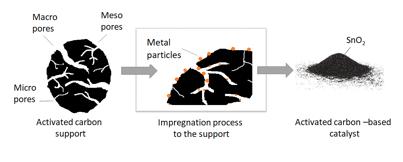Freeze-drying did not result in any changes in the tannins which could be detected via the analysis employed in this project, Folin-Ciocalteu and the gravimetric method based on Divergan®. Therefore, freeze-drying is recommended for ease of handling as well as stability. An example of a freeze-dried sample is shown in Figure 41.
Figure 41. Freeze-dried tannins
3.3 WP3.2 Tannins upgrading by foaming Finland produces around 80 million cubic meters of forest industry products annually and, as a by-product, 7.7 million tons of bark. In addition to the use of bark and sawdust as an energy resource in Finland, these materials can be further processed at bio-refineries to produce value-added chemicals and end products, as Figure 42 shows. In particular, tannin foams derived from biomass have gained significant interest among scientists.
Figure 42. Tannin foam production using spruce saw dust and bark as starting material (Varila 2020)
Tannin-based foams are considered environmentally friendly, renewable materials and their use reduces the need of plastic, toxic foams, and chemicals derived directly from fossil fuels. The main goal in this work packet was to develop a route for making tannin-based foams from bark extracts and utilize the properties of them. According to literature, the most promising applications for tannin foams is thermal insulation alternatives for building purposes. Another quite interesting development route for tannin foams has been their thermal upgrading at high temperatures to produce tannin-based carbon foams. These carbon foams have a unique structure and properties that benefit their use in applications such as energy storage, electrode material, and adsorbents.
3.3.1 METHOD In the synthesis of tannin-based foams, the key ingredients are cross-linking agents, which can be for example aldehydes or alcohols such as formaldehyde or furfuryl alcohol. These agents are responsible
37








